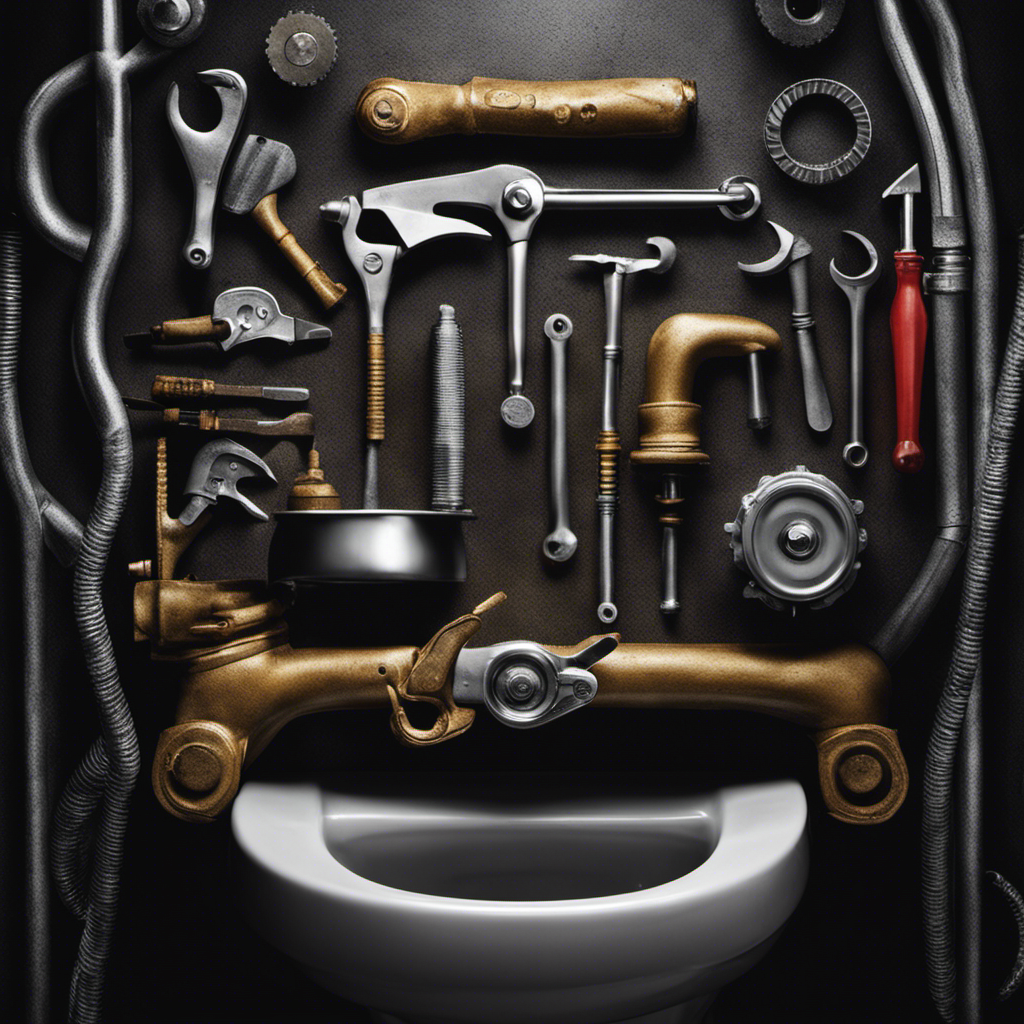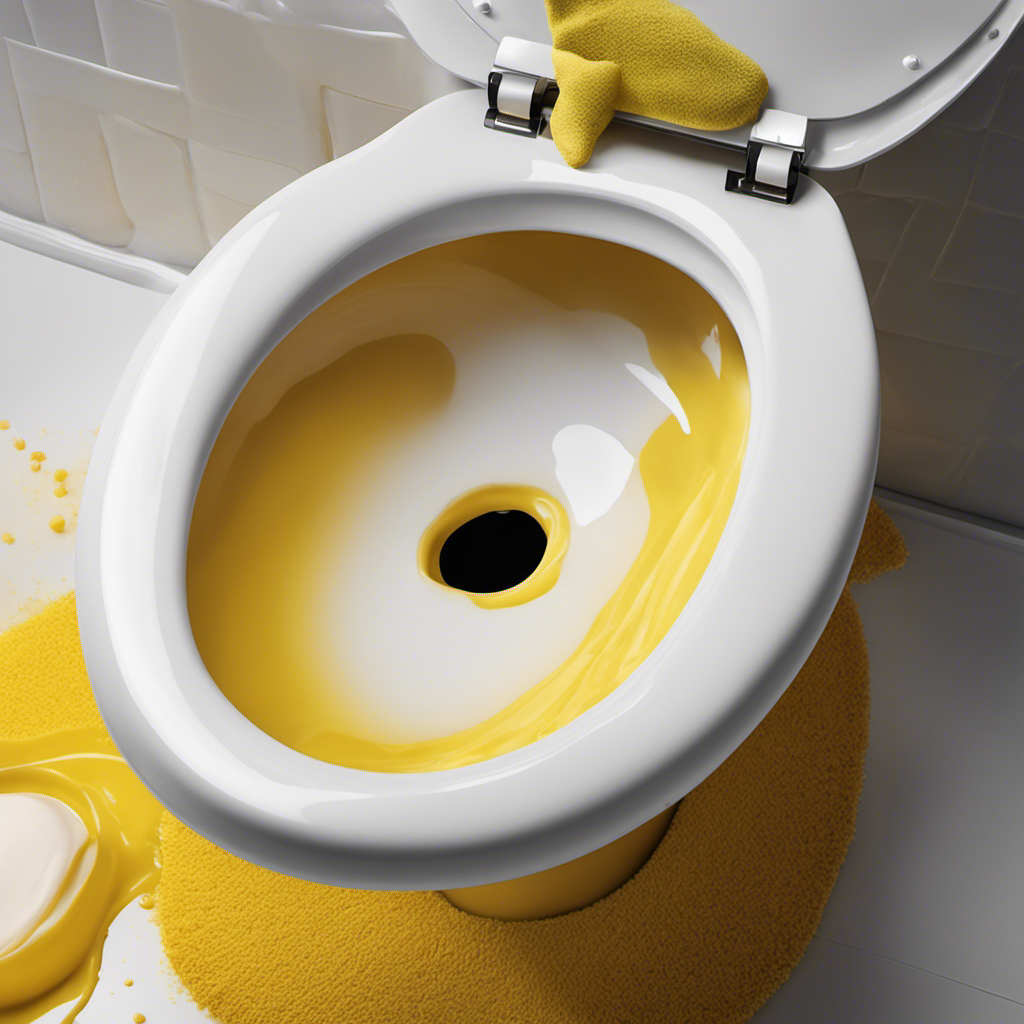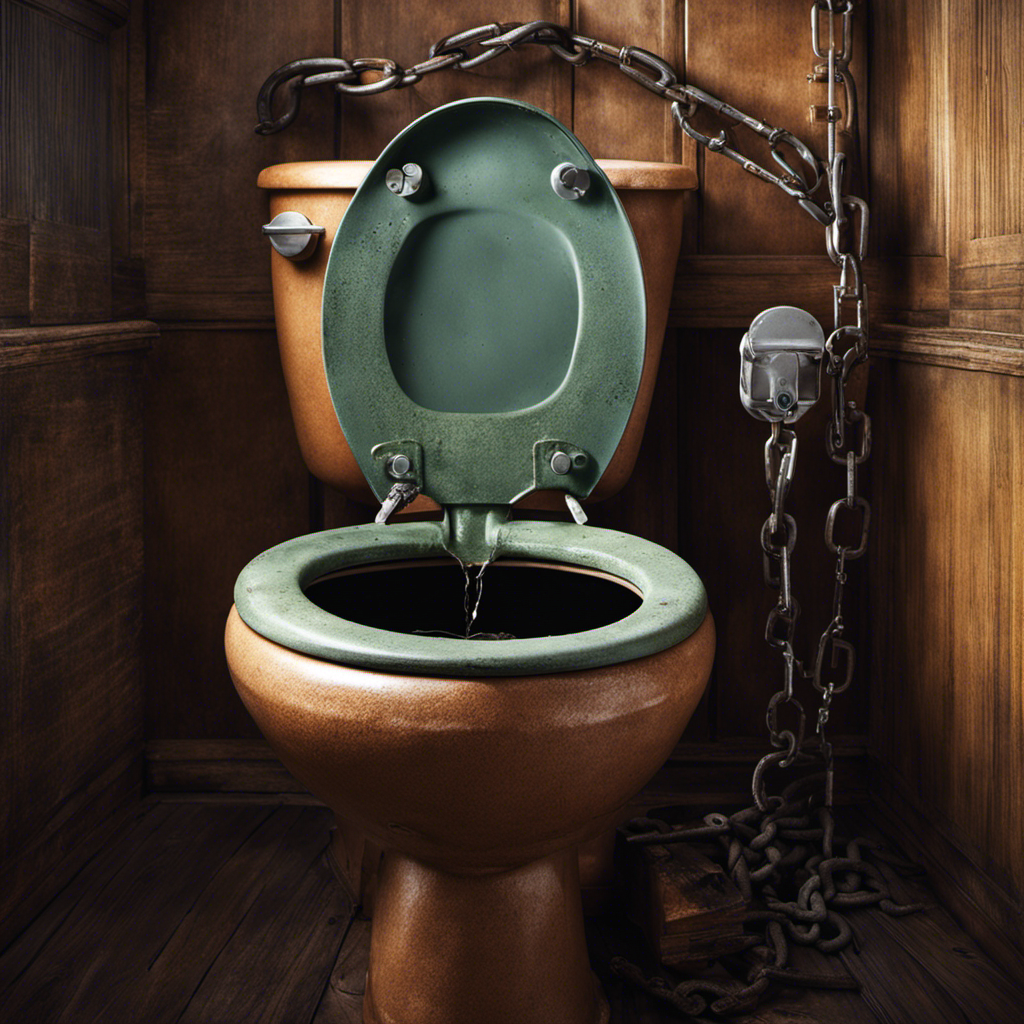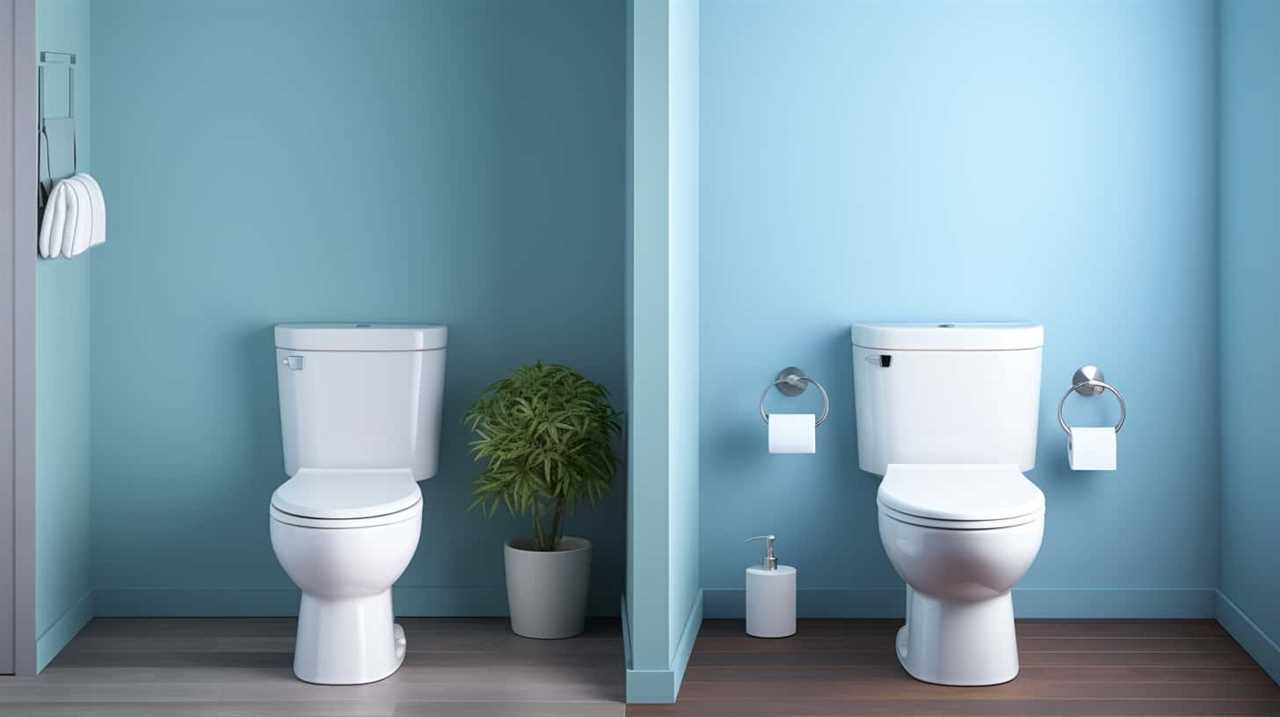I’ve been there, standing in the bathroom, listening to the incessant sound of water running in the toilet. It’s not only annoying, but it’s also wasting water and money.
But don’t worry, I’ve got you covered. In this article, I’m going to show you step-by-step how to repair a running toilet.
From identifying the cause to fixing faulty valves or flappers, I’ll give you all the practical tips and tricks you need to get your toilet back to working order in no time.
Let’s dive in and stop that running water!
Key Takeaways
- The most common cause of a running toilet is a faulty flapper valve.
- Shut off the water supply to the toilet to prevent further water flow and to work on the issue without the risk of flooding.
- Adjust the fill valve properly to control the water level in the toilet tank.
- Inspect and replace any faulty flapper or flush valve to stop the continuous running of water.
Identifying the Cause of a Running Toilet
If your toilet is constantly running, it’s important to first identify the cause before attempting to fix it. Troubleshooting common toilet problems is essential to understanding toilet plumbing basics.
The most common cause of a running toilet is a faulty flapper valve. This valve controls the water flow from the tank to the bowl. If it is not sealing properly, water will continuously leak into the bowl and the tank will constantly refill.
To check if the flapper valve is the culprit, remove the tank lid and flush the toilet. If the water keeps running, you can try adjusting the chain length or replacing the flapper valve.
Once you have identified the cause, you can move on to shutting off the water supply to the toilet, which will be discussed in the next section.
Shutting off the Water Supply to the Toilet
To stop the water flow, you can simply turn off the valve located on the wall behind the toilet. This is an essential step in repairing a running toilet. Shutting off the water supply prevents any further water from flowing into the toilet tank and allows you to work on the issue without any risk of flooding.
Here are some preventive maintenance tips and common toilet problems you might encounter:
-
Preventive Maintenance:
-
Regularly check for leaks and drips around the toilet base.
-
Clean the toilet bowl and tank to prevent buildup and clogs.
-
Ensure that the flapper and fill valve are in good condition.
-
Common Toilet Problems:
-
Running toilet: caused by a faulty flapper or improperly adjusted fill valve.
-
Clogged toilet: caused by excessive toilet paper or foreign objects.
-
Weak flush: caused by a partial clog or a malfunctioning flapper.
Adjusting the Fill Valve to Stop the Running Water
The first step in fixing a continuously flowing toilet is adjusting the fill valve. The fill valve controls the water level in the toilet tank, and if it is not adjusted properly, it can cause the toilet to run continuously.
To adjust the fill valve, follow these steps:
- Locate the fill valve, which is usually on the left side of the toilet tank.
- Turn the adjustment screw clockwise to decrease the water level or counterclockwise to increase it.
- Adjust the water level until it is about 1 inch below the top of the overflow tube.
Fixing a Faulty Flapper or Flush Valve
To stop the continuous flow of water in your toilet, locate the faulty flapper or flush valve and replace it. Follow these steps to troubleshoot the water level issue:
-
Turn off the water supply to the toilet by shutting off the valve located behind the toilet.
-
Remove the tank lid and flush the toilet to drain the water from the tank.
-
Inspect the flapper or flush valve for any signs of damage or wear. If it is cracked or deteriorated, it needs to be replaced.
-
Disconnect the chain or strap connecting the flapper or flush valve to the toilet handle.
-
Install the new flapper or flush valve by following the manufacturer’s instructions.
-
Reconnect the chain or strap to the toilet handle and adjust the length if necessary.
-
Turn on the water supply and test the toilet to ensure the issue is resolved.
Cleaning or Replacing the Toilet’s Overflow Tube
By cleaning or replacing the toilet’s overflow tube, you can prevent water from overflowing and causing potential damage. The overflow tube is a crucial component that helps regulate the water level in the toilet tank.
Over time, mineral deposits and debris can accumulate in the tube, leading to clogs and inefficient water flow. To clean the overflow tube, start by turning off the water supply to the toilet. Then, use a wire brush or a small bottle brush to scrub away any buildup.
If the tube is severely clogged or damaged, it may be necessary to replace it. To do this, simply disconnect the tube from the fill valve and replace it with a new one.
Regularly cleaning and inspecting the overflow tube is an essential part of toilet maintenance, ensuring proper functionality and preventing costly water damage.
Frequently Asked Questions
How Do I Know if My Toilet Is Running?
I can tell if my toilet is running by listening for a constant flow of water or a hissing sound. To fix it, I can troubleshoot by checking the flapper, fill valve, and water level.
Can a Running Toilet Waste a Lot of Water?
Yes, a running toilet can waste a lot of water. It can lead to high water bills and is not good for water conservation efforts. Let me share some practical tips on how to fix it.
What Tools Do I Need to Repair a Running Toilet?
To repair a running toilet, I’ll need a few tools like a wrench, pliers, and a screwdriver. First, I’ll shut off the water supply and then follow the steps to fix the problem.
Is It Possible to Repair a Running Toilet Without Shutting off the Water Supply?
Yes, it is possible to repair a running toilet without shutting off the water supply. By troubleshooting and identifying the specific issue, you can make the necessary repairs while the water is still on.
How Often Should I Clean or Replace the Toilet’s Overflow Tube?
Cleaning or replacing the toilet’s overflow tube is an important part of regular maintenance. It’s recommended to clean it every few months to prevent clogs and ensure proper water flow.
Conclusion
In conclusion, repairing a running toilet is a simple task that can save you money on water bills and prevent unnecessary water wastage. By identifying the cause of the problem, shutting off the water supply, and adjusting the fill valve, you can effectively stop the running water.
Additionally, fixing a faulty flapper or flush valve and cleaning or replacing the toilet’s overflow tube are other effective solutions.
So don’t let your toilet run like a wild river, take action and fix it today!










